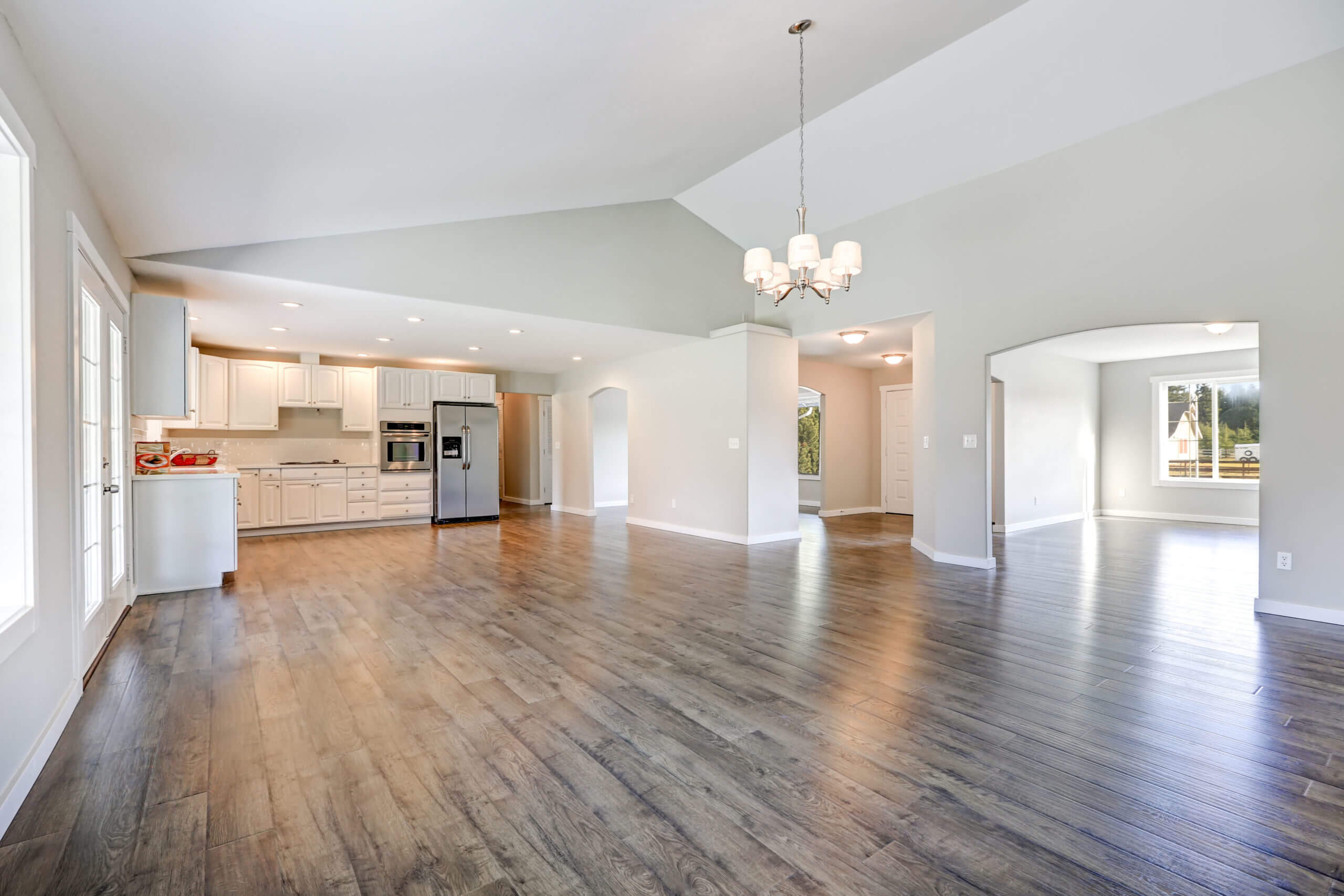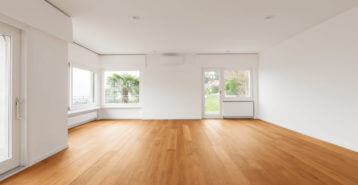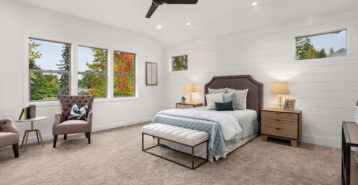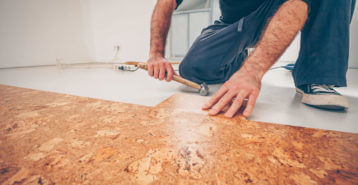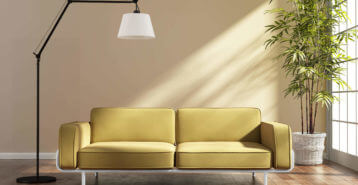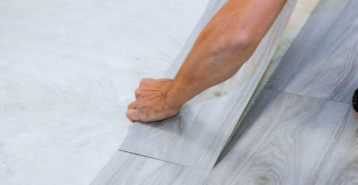What is Laminate Flooring?
According to a homeowner survey by Modernize, 12% of homeowners currently have laminate floors in their homes and another 13% plan to install laminate flooring in the near future. The cost to install laminate floors is also quite affordable, making it a great alternative to higher end flooring types like hardwood or tile.
One misconception of laminate is that it’s a form of plastic. Laminate is not plastic at all, but rather a combination of wood fiberboard and resins. Laminate has four very important layers to keep your home looking great and resistant to wear and tear:
- Back Layer: The bottom-most layer of the flooring, the underlayment, is a subflooring that protects the plank from moisture. It also balances out the floor.
- Core Layer: On top of the underlayment is a durable board that also protects the floor from moisture and also deters indentations.
- Design Layer: This is the layer that is a high-resolution print of the floor material, which can be anything like hardwood, tile and stone.
- Wear Layer: Finally, the very top, clear layer protects the design layer from fading, stains and other damage.
The design and wear layers are glued with resins under high heat and pressure to a base of pressed-wood byproducts and the backing layer for the underlayment.
Laminate flooring is extremely versatile, partly thanks to the way it is made. The tough top layer, usually made from several coats of clear melamine and aluminum oxide, protects the image layer from abrasion and water damage. It also provides increased resistance to scratches and impacts than many traditional hardwood flooring materials. The high-density fiberboard backing, meanwhile, gives laminate flooring the rigidity needed to absorb the weight of foot traffic.
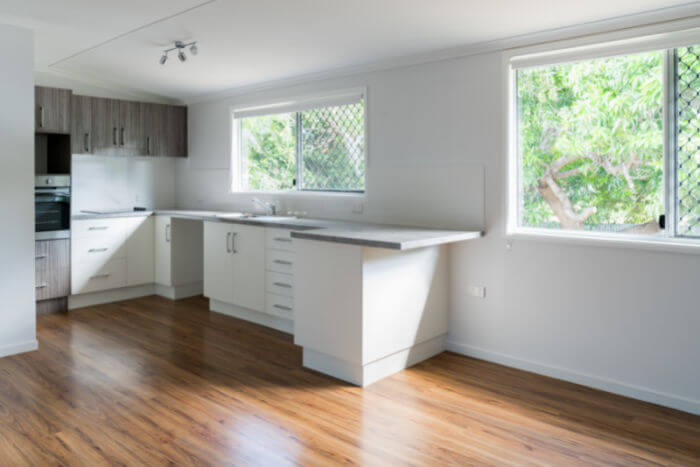
Laminate flooring systems are not glued or nailed to the subfloor during installation. The entire floor “floats” instead, so it can be used to cover a variety of existing subfloor surfaces in any state of disrepair. Planks lock together using a tongue and groove design, which is easier to install than many other types of flooring. This makes laminate a preferred choice for DIY homeowners. Laminate flooring is also more hypoallergenic than carpet since it does not trap pet hair, dander, and dust.
Laminate Flooring is the #1 Modern Flooring Pick
In our flooring survey, laminate came out on top as the number one flooring choice for homeowners who plan to install new floors in the next 12 months, with 16.5% respondents picking it for their homes.
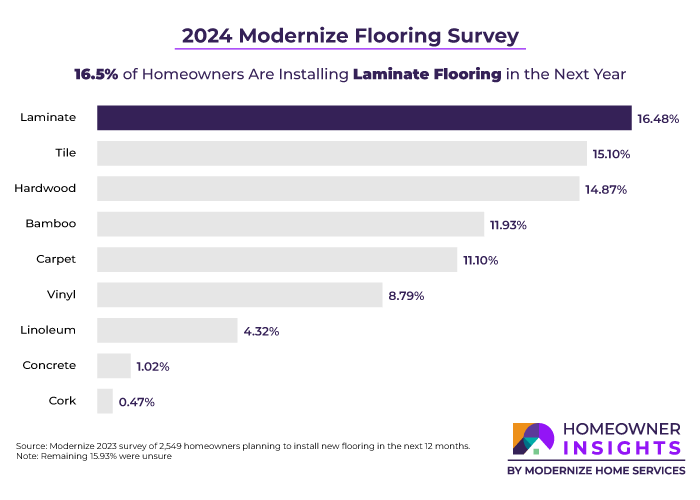
How Much Does it Cost to Install Laminate Flooring?
On top of being durable and easy to install, laminate is also one of the more affordable flooring options. Laminate flooring installation costs anywhere from $2.70 per square foot on the low-end, to $11 per square foot on the high-end.
A homeowner could install 1,000 square feet of laminate flooring and pay under $3,000 for the flooring. Remember, the overall cost depends heavily on the total square footage and type of laminate. However, most homeowners save hundreds to thousands of dollars by choosing laminate floors over hardwood.
Below, learn more about how costs to install laminate flooring can vary by project type.
Basic
A basic laminate floor installation should cost between $2 and $3 per square foot.
This usually includes thinner laminate (around 6-7mm thick) with a shorter warranty. The design options might be more limited, and the appearance might be less realistic than higher-end options.
Mid-Range
A mid-range laminate floor installation will generally cost between $3 and $4 per square foot.
Mid-range laminates are typically around 8-10mm thick and offer more realistic textures and a wider variety of styles and designs. They are generally more durable than basic laminates and come with a longer warranty.
High-End
A higher end laminate flooring installation will cost closer to $4 to $11 per square foot or more.
High-end laminate flooring is often 12mm thick or more and is designed to closely mimic the look and feel of natural materials, with high-definition printing and embossed textures. It typically has the most durable wear layer and comes with a lengthy warranty.
Water-Resistant or Waterproof Laminate Flooring
To install a waterproof laminate floor, the cost will often fall in the $3 to $5 per square foot range. These are newer categories of laminate flooring designed to better withstand moisture. They are ideal for installation in kitchens, bathrooms, and basements.
Labor and Installation
Not only are the materials inexpensive, but because the laminate flooring installation process is easy, it makes for a lower professional labor costs. Installation and labor costs for laminate are between $2 and $8, which is fairly low compared to other types of flooring. Note that underlayment, which is needed for laminate flooring, can range between $0.15 to $0.50 per square foot.
Types of Laminate Floors
It is helpful to think of laminate flooring types in terms of both installation types, surface types (or designs), and flooring plank styles.
Installation types for laminate flooring will describe how the laminate flooring is installed. It will also determine whether or not you can “do it yourself.”
On the other hand, surface types describes your options in terms of design, appearance, and finishing style. There are many types of laminate flooring surfaces, many of which mimic other types of flooring such as hardwood or tile. Let’s run through the various types of laminate flooring.
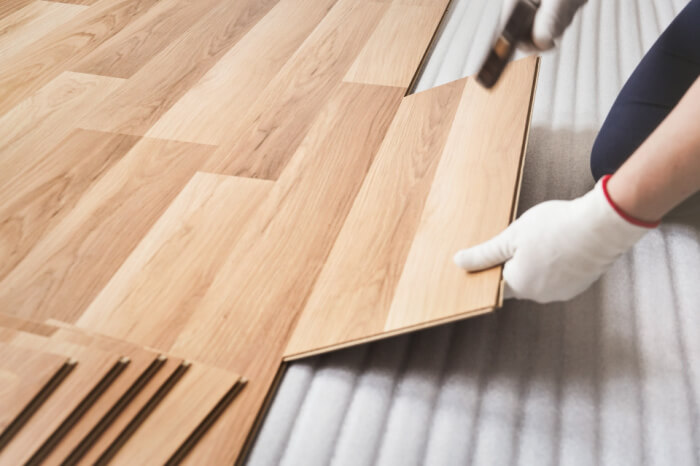
Installation Types
The following types of flooring planks determine how the laminate will be installed in your home.
- Click-lock laminate planks. This type of laminate is also known as click-together or interlocking laminate flooring. Click-lock laminate planks or tiles have interlocking grooves that are easily “clicked” into place. It can be installed by a handy DIYer due to the ease of the project. However, if you are uncertain about how to install or require underpadding for the floors, it is best to use a professional installer.
- Glued laminate planks. Rather than clicking planks together, this type of laminate flooring requires glue to install. You will most likely need a professional to install these laminate floors, but they will most likely be more durable than click-lock planks.
- Pre-glued laminate planks. Sometimes laminate planks come “pre-glued,” and the glue is already applied to the tongue and grooves. This allows for a quicker, easier, and less messy installation process.
If you are unsure about which type of planks your home needs, it is best to talk to a professional. A flooring contractor will be able to determine the best installation method for your circumstances and budget.
Surface Types
Laminate flooring comes in different types of surfaces, which create the overall design and appearance. When it comes to surfaces, your decision will be based on your design preferences and the aesthetic you are going for in a particular room.
- Smooth. Choose this finish if you want your flooring to resemble polished hardwood. A smooth finish is void of unnatural texturing and closely resembles brand new hardwood, marble, and even ceramic tile.
- Embossed. An embossed finish will give your floors a more textured and grainy look. This is more appearance based than truly a textural difference – the flooring will not feel any rougher with an embossed finish.
- Distressed. Also known as hand scraped, this finish resembles antique or vintage wood flooring.
- Gloss. You can choose between a high-gloss finish for a shiny look or low-gloss finish for a matte look. This is mainly an aesthetic decision, as the two options are the same in terms of strength and durability. However, glossy flooring tends to show off blemishes and marks more so than matte floors.
Laminate Plank Styles
- Traditional plank. The traditional plank is 2 1/4 to 3 inches wide and provides a classic flooring look that mimics hardwood.
- Wide plank. The wider plank option will be between 5 and 14 inches wide and can provide a more rustic, farmhouse feel.
- Thin plank. This narrower plank has a width of anything less than 2 1/4 inches and is a great choice for a more minimalistic look.
- Herringbone. You will notice this flooring plank style by its zig-zagged planks that are cut in a 90 degree angle. Herringbone floor planks can give any room a more creative, unique flair.
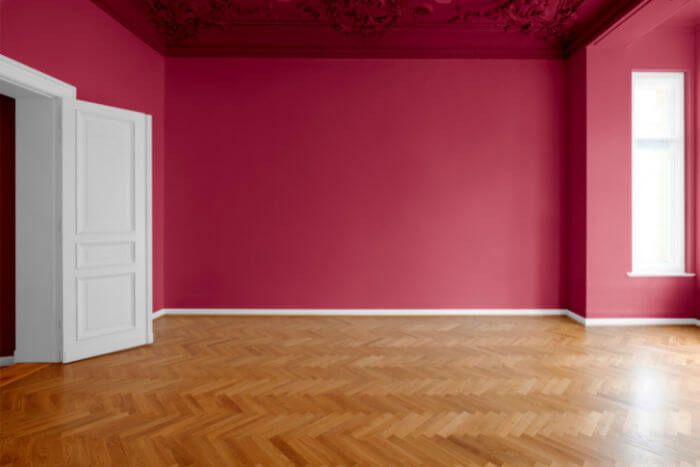
Benefits of Laminate
There are many reasons that laminate comes out on top in home projects, from cost and durability to style.
- Easy to install. Laminate comes in boards that snap together and don’t require any glue or grout. If you’d rather have a professional take on the task, it’s a project that can take a day.
- Versatile. Since the image on the design layer is a print, it can be literally anything you’d like. Those seemingly out-of-reach materials can be yours.
- Durable. Thanks to the four layers and the toughness of laminate, it’s a very durable material that can withstand a lot of food traffic and use. Pets and kids are no match for this flooring.
- Antibacterial. Speaking of kids, parents with little ones who crawl around on the floor need not worry. Many laminates are made of cork, which is naturally antibacterial, and a coating is typically added to repel dirt and germs.
- Eco-friendly. For some homeowners, keeping the earth in mind while choosing materials is of the utmost importance. Laminate is a great choice in this case, as it’s recyclable and the materials that make laminate flooring is biodegradable.
Additional Notes About Laminate Floors
No material is perfect, and laminate is no different. So while it’s cost effective, easy to clean and durable, there are some downsides to mention if you want to install laminate floors.
- Not waterproof: Laminate is fairly water resistant and will do fine in a kitchen, dining room and other high-traffic areas in a home. But it’s best to avoid installing it in places prone to standing water, like bathrooms and laundry rooms, as it is not completely waterproof. The four layers of the laminate work together to be as moisture-proof as they can, but water can still seep between the seams and cause damage.
- Hard to fix: This is a durable material that can withstand a beating and minor wear and tear can be buffed out. But should there be excessive damage over the years, unlike hardwood, it can’t be refinished or sanded down. That area of the laminate will have to be replaced. With that said, do keep your manufacturer’s warranty — many cover repairs and replacements for decades!
Compare top-rated flooring pros in your area.
Read real homeowner reviews, explore qualifications, and view promotions. Modernize makes it easy to browse professionals and find one that will be perfect for your project.
